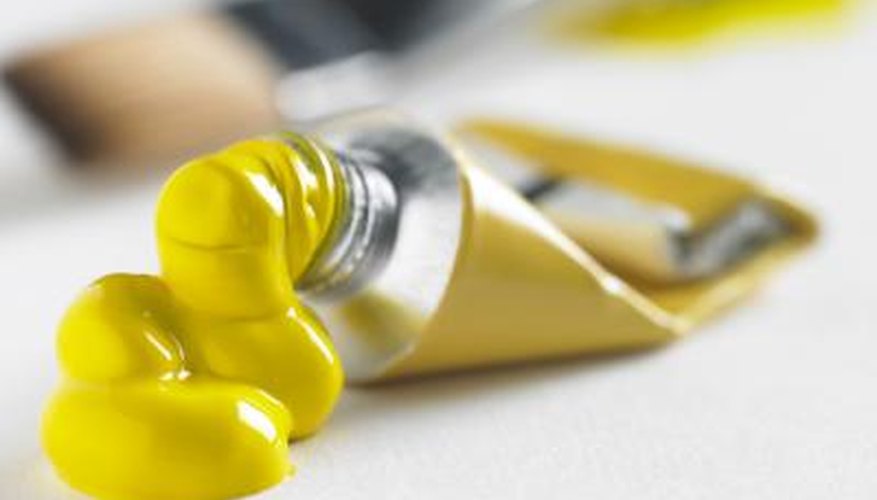Acrylic and gouache are popular paint choices for fine art and illustration. While both are water-based paints, there are important differences in both the physical characteristics and the working methods of each type of paint. Understanding the similarities and differences will help you choose which medium will work best for what you are trying to achieve with a painting.
Acrylic Characteristics
While any pigment suspended in a synthetic resin binder can be called acrylic, illustrator and author Catharine Slade points out in "The Encyclopedia of Illustration Techniques": "The most common form of acrylic is a plastic latex or emulsion, soluble in water." Acrylics will adhere to almost any surface, but the most common are canvas, wooden panels, metal and paper. Acrylics can also be used on internal or external walls, making it very suitable for murals. Wet acrylics are water-soluble, but once dry, they are waterproof and durable in most environmental conditions.
- While any pigment suspended in a synthetic resin binder can be called acrylic, illustrator and author Catharine Slade points out in "The Encyclopedia of Illustration Techniques": "The most common form of acrylic is a plastic latex or emulsion, soluble in water."
- Acrylics will adhere to almost any surface, but the most common are canvas, wooden panels, metal and paper.
Gouache Characteristics
At its most basic, gouache is opaque watercolour. It is made of pigment suspended in a binder, which is often gum Arabic. The most common surface for gouache, like watercolour, is paper. While gouache has a long history of use by artists, its flexibility and reproducibility has made it more popular for illustration than fine art in modern times. Once dry, gouache remains soluble to water, allowing for blending even after the paint has dried. This also means that finished gouache paintings should be protected behind glass.
- At its most basic, gouache is opaque watercolour.
- Once dry, gouache remains soluble to water, allowing for blending even after the paint has dried.
Acrylic Techniques
Acrylics allow for a wide range of techniques. Used directly from the tube, acrylics are opaque and can be worked in a way that is similar to oil paints, except acrylics have a much more rapid drying time. There are various acrylic mediums available that can be mixed with acrylic paint to extend drying time, change the glossiness, add transparency or otherwise alter the properties of the paint. Thinned with water or an acrylic medium, acrylic paint can be applied in transparent glazes. Acrylics are also very suited for thick, impasto applications where texture is built on the canvas.
- Acrylics allow for a wide range of techniques.
- Used directly from the tube, acrylics are opaque and can be worked in a way that is similar to oil paints, except acrylics have a much more rapid drying time.
Gouache Techniques
Gouache is a flexible paint that can be thinned and used like watercolour or applied thickly to take advantage of its opaque properties. Gouache is particularly suited to laying in large areas of solid colour. Two colours can be blended by working wet on wet or by placing the colours next to each other and going over them with a damp brush once the paint is dry. Gouache can be used in glazes to build up colour slowly. Once a layer of paint is dry, it can be worked into with wet paint, allowing you to blend the paint you are applying with what is already on the paper.
- Gouache is a flexible paint that can be thinned and used like watercolour or applied thickly to take advantage of its opaque properties.
